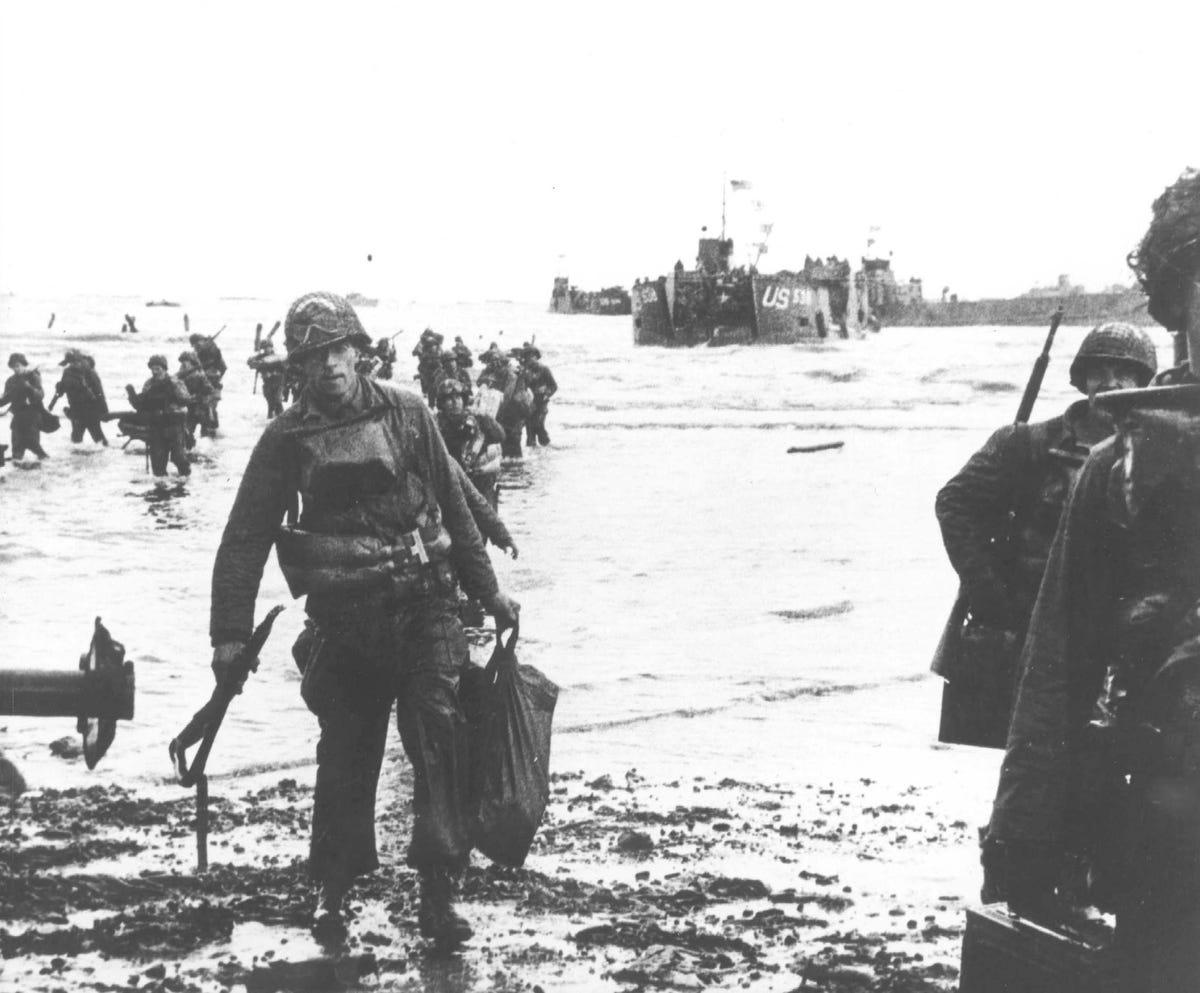A soldier's gear on D-Day (pictures)
A look at the cutting-edge gear a soldier would likely be carrying storming the beach at Normandy in 1944.

D-Day invasion
On the day of the invasion, American assault troops move onto Utah Beach as part of the Allied invasion of Europe on the northern coast of France on June 6, 1944.
Hitler's forces knew the invasion would come, and that it would be the decisive moment of the war. He just didn't know precisely when or where that attack would commence.
"This operation is not being planned with any alternatives. This operation is planned as a victory, and that's the way it's going to be. We're going down there, and we're throwing everything we have into it, and we're going to make it a success."
Here are some of the tools the men carried on that historic day 70 years ago.
89th Infantry Division wearing M1 helmets
Soldiers from 89th Infantry Division, seen here ducking for cover as they cross the Rhine River in assault boats, 1945. The steel M1 helmet was the definitive head protection of the time.
M-1 Garand Rifle
The M1 Garand,officially designated as United States Rifle, Caliber .30, M1, was the standard issue semi-automatic rifle issues during WWII. Used also in the Korean War and even with limited use in Vietnam and up through 1963, Gen. George Patton called the weapon "the greatest battle implement ever devised."
M-1928 haver sack
The M-1928 haver sack infantry pack carried all the gear a soldier needed to survive in the field.
US Army HBT Trousers
These trousers were worn by some assault troops, on the D-Day Normandy landing invasion, over their wool trousers and worn by themselves in the summer.
HBT jacket
HBT jacket with 1st div patch on left sleeve, seen here during a WWII reenactment in 2010.
US Army wool undershirt
US Army wool undershirt, a staple of comfort and survival during WWII.
Jeep cap
Cap, Wool, Knit, M-1941. Often called the "Jeep cap." The Jeep Cap was a wool knit hat to be worn underneath the heavy M-1 combat helmets, offering soldiers extra comfort with both padding and warmth.
10 pocket ammo belt
A 1943-dated 10-pocket ammo belt commonly worn during WWII used with both the Springfield and Garand Rifles.
Pistol Belt
WWII US Pistol Belt carried a soldiers sidearm.
M-1 Garand Rifle Sling
The M-1 Garand Rifle Sling kept a troop's rifle close at hand during WWII.
WWII M-1 Garand Bayonet and scabbard.
The WWII M-1 Garand Bayonet and scabbard served as both an all purpose knife and a bayonet for his rifle.
M-1910 T-handled shovel
The M-1910 T-handled shovel was used for digging trenches.
M-1910 pick mattock
M-1910 pick mattock was a pick-axe that detached into two pieces for easy transport.
First aid pouch
A simple, canvas first aid pouch typical of WWII.
Canteen
A typical WWII soldier's canteen.
Dinner rations
Early War Dinner Ration with wax paper covered inner box.
WWII Fire Control Rifle Gauge
WWII Fire Control Rifle Gauge.
Great Navigators Stop Watch
Great Navigators Stop Watch

